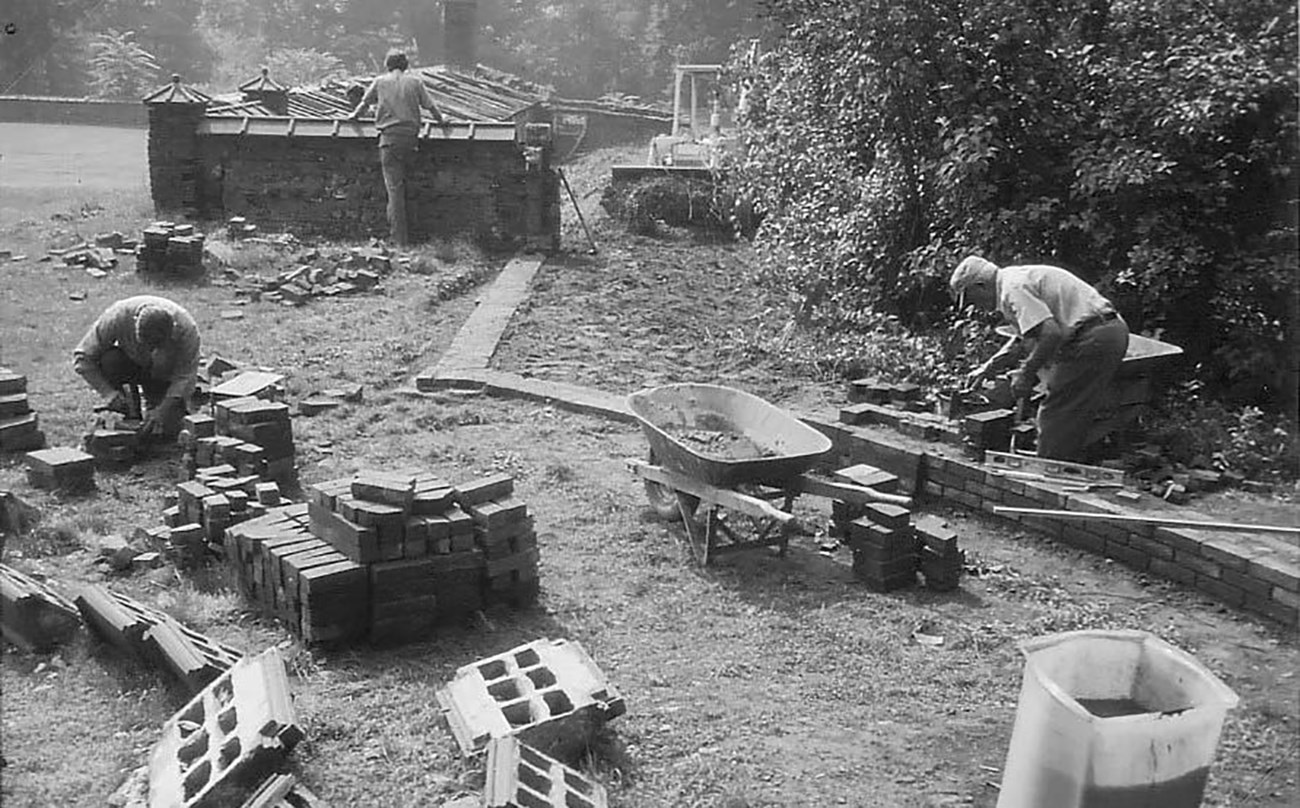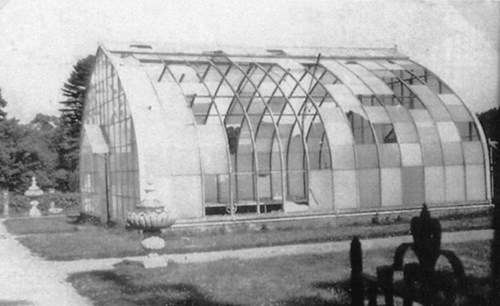
When Mr. Vanderbilt died in 1938, the Hyde Park estate was bequeathed to Mrs. Vanderbilt’s niece, who in turn donated it to the United States government in 1940, largely due to the influence of the President of the Unites States, Franklin Delano Roosevelt. FDR took an active interest in acquiring the estate for the American people, and continued to make suggestions and recommendations as the house and grounds were prepared to be opened to the public. Implementing Roosevelt’s outline for development proved difficult, however, because of limited funds. The development of the house and grounds for public use and enjoyment began in 1940, and the park was opened in July of that year. National Park Service landscape architects made initial recommendations, noting that the greenhouses and formal gardens had already begun to decline in the two years since Mr. Vanderbilt’s death as only three men were employed to care for the gardens and grounds. FDR’s request, however, that the greenhouses be restored to their original purpose and usefulness, and the gardens maintained with simple planting initiated a discussion about their rehabilitation and upkeep. 
An inventory of the of the gardens completed in August, 1940 is the only written document that records the contents of what was growing in the gardens. Shortly thereafter, as part of the 1941 Master Plan, the National Park Service completed a Planting Guide for Perennial Borders for the Vanderbilt Gardens. Initially the Civilian Conservation Corps (CCC) helped maintain the gardens. The use of CCC labor was soon curtailed by World War II and the maintenance of the greenhouses and gardens proved to be extremely difficult, discouraging, and impractical. The gardens were closed to visitation in 1943 and gradually dismantled throughout the next two decades. In 1946, the rose and palm houses were put up for sale as surplus property. Only the rose house sold in 1947. In 1950, one palm house was destroyed, and all glass was removed from the remaining palm house. The dismantling of the timber framing of the pergolas occurred in 1951, and 1954 saw the removal of the remaining palm and carnation houses. In the 1950s, the remaining greenhouses were removed. In the 1960s, the condition of the gardens began to improve, first with an infusion of government funds and second with the establishment of the Frederick W. Vanderbilt Garden Association. Work began in earnest in the 1980s with the restoration of the pergolas, trellises, and walls. The Frederick W. Vanderbilt Garden Association was formally established in 1984 and continues today as an important partner in the restoration and maintenance of the Vanderbilt gardens. Timeline of Major Restoration Campaigns1966. The park's Master Plan recommends a phased eventual restoration that could be implemented over a period of years. The plan recommended the emergency stabilization or removal of garden structures in danger of imminent collapse. Recommendations also included covering or fencing the pools for visitor safety. 1973. The park begins to delineate the planting beds and walks undertaken by the Youth Conservation Corp, a summer youth employement program. This work would be accomplished over the next few years. 1981. The park produces plans for the "Restoration of Structures, Walls and Other Features." The park contracts with DWK Inc. to restore the masonry walls, drainage system, steps and pergolas. These restorations were completed in 1983. The pool was resurfaced at this time. 1984. The Frederick Vanderbilt Garden Association is established to partner with the National Park Service in support of the garden restoration. 1985. The annual beds are replanted for the first time since 1938. 1990. The Frederick Vanderbilt Garden Association raises funds for a new pump and filtration system. 1986. The perennial garden and cherry walk restorationcomplete with the addition of over 3,000 plants. 1987. Restoration of the rose garden is complete with the introduction of 1,400 rose shrubs. 1990. Restoration of the reflecting pool is complete. 2002. Putto with Dolphin fountainhead and basin is restored. 2012. Rehabilitation of the North Pergola. 2014. Rehabilitation of the Orpheus Fountain pool. Reproduction of the fountain head and catch basin is planned to begin in 2024. 2018. Restoration of shrub plantings surrounding the rose garden. 2019. Emergency Tool House rehabilitiation resulting from storm damage. 2021. Rehabilitation of the Potting Shed. |
Last updated: May 11, 2021
